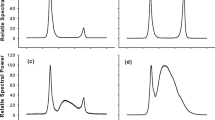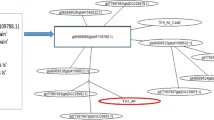Abstract
The inclusion Asparagopsis spp. into the diet of ruminant animals has produced compelling data regarding the mitigation of agricultural methane emissions. This reduction is achieved via the action of brominated halogenated compounds, predominantly bromoform, which act to inhibit methanogenic enzymes in ruminant digestion. As such, there is great interest in the mass cultivation of Asparagopsis for use as a dietary supplement for livestock. However, data are still lacking on the basic biology of Asparagopsis relating to factors that influence the synthesis of bromoform, the key bioactive compound of interest. One of the two precursors for bromoform biosynthesis is hydrogen peroxide, while the other is bromide, a naturally occurring ion in seawater. Hydrogen peroxide is generated internally within the alga and can be stimulated by abiotic stress. Currently, the influence of temperature and external hydrogen peroxide addition on bromoform dynamics have been explored. The aim of this study is to explore how the stimulation of hydrogen peroxide by the application of light stress influences the dynamics of bromoform precursor uptake and production, as well as how this may drive changes in bromoform concentration and the persistence of gland cells, the cellular structures where bromoform is stored. While provision of light stress significantly stimulated an increase in hydrogen peroxide production, bromide dynamics were also significantly influenced, resulting in net bromide release, rather than uptake. Further, bromoform concentrations in algal tissue immediately declined after exposure to high light, from 4.5% to 2% (dry weight), while gland cell abundance declined from 95% to around 60%. Here we present data for dramatic alterations in bromoform dynamics after exposure to moderate increases in light intensity. These findings are strongly applicable to commercial Asparagopsis cultivation and will contribute to optimising algal quality during cultivation and harvest.





Similar content being viewed by others
Data availability
Data are available upon kind request to the authors.
References
Beissner RS, Guilford WL, Coates RM, Hager JP (1981) Synthesis of brominated heptanones and bromoform by a bromoperoxidase of marine origin. Biochemistry 20:1094–1096
Burton JD (1996) The ocean: A global geochemical system. In: Summerhayes CP, Thorpe Sa (eds) Oceanography: An illustrated guide. CRC Press, Boca Raton, pp 165–181
Butler A, Carter-Franklin JN (2004) The role of vanadium bromoperoxidase in the biosynthesis of halogenated marine natural products. Nat Prod Rep 21:180–188
Christensen JP (2020) Improved bromide measurements using chloramine-T shows, bromide depletion in the Gulf of Maine. Cont Shelf Res 193:104028
Cooper WJ, Petasne RG, C Plane JM (1988) Photochemical formation of H202 in natural waters exposed to sunlight. Environ Sci Technol 22(10):1156-1160
Ekdahl A, Pedersén M, Abrahamsson K (1998) A study of the diurnal variation of biogenic volatile halocarbons. Mar Chem 63:1–8
Glasson CRK, Kinley RD, de Nys R, King N, Adams SL, Pacher MA, Svenson J, Eason CT, Magnusson M (2022) Benefits and risks of including the bromoform containing seaweed Asparagopsis in feed for the reduction of methane production from ruminants. Algal Res 64:102673
Guillard RRL (1975) Culture of phytoplankton for feeding marine invertebrates. In: Smith WL, Chanley MH (eds) Culture of marine invertebrate animals. Plenum Press, New York, pp 29–60
Keng FSL, Phang SM, Rahman NA, Leedham EC, Hughes C, Robinson AD, Harris NRP, Pyle JA, Sturges WT (2013) Volatile halocarbon emissions by three tropical brown seaweeds under different irradiances. J Appl Phycol 25:1377–1386
Küpper FC, Leblanc C, Meyer-Klaucke W, Potin P, Feiters MC (2014) Different speciation for bromine in brown and red algae, revealed by in vivo X-ray absorption spectroscopic studies. J Phycol 50:652–664
Küpper FC, Schweigert N, Ar Gall E, Legendre J-M, Vilter H, Kloareg B (1998) Iodine uptake in Laminariales involves extracellular, haloperoxidase-mediated oxidation of iodide. Planta 207:163–171
Laturnus F, Svensson T, Wiencke C, Öberg G (2004) Ultraviolet radiation affects emission of ozone-depleting substances by marine macroalgae: Results from a laboratory incubation study. Environ Sci Technol 38:6605–6609
Ledford HK, Niyogi KK (2005) Singlet oxygen and photo-oxidative stress management in plants and algae. Plant Cell Environ 28:1037–1045
Machado L, Magnusson M, Paul NA, de Nys R, Tomkins N (2014) Effects of marine and freshwater macroalgae on in vitro total gas and methane production. PLoS One 9:e85289
Marshall RA, Hamilton JTG, Dring MJ, Harper DB (2003) Do vesicle cells of the red alga Asparagopsis (Falkenbergia stage) play a role in bromocarbon production? Chemosphere 52:471–475
Marshall RA, Harper DB, Colin McRoberts W, Dring MJ (1999) Volatile bromocarbons produced by Falkenbergia stages of Asparagopsis spp. Limnol Oceanogr 44:1348–1352
Mata L, Gaspar H, Justino F, Santos R (2011) Effects of hydrogen peroxide on the content of major volatile halogenated compounds in the red alga Asparagopsis taxiformis (Bonnemaisoniaceae). J Appl Phycol 23:827–832
Mittler R, Vanderauwera S, Suzuki N, Miller GAD, Tognetti VB, Vandepoele K, Gollery M, Shulaev V, van Breusegem F (2011) ROS signaling: the new wave? Trends Plant Sci 16:300–309
Nitschke U, Dixneuf S, Ruth AA, Schmid M, Stengel DB (2013) Molecular iodine (I2) emission from two Laminaria species (Phaeophyceae) and impact of irradiance and temperature on I2 emission into air and iodide release into seawater from Laminaria digitata. Mar Environ Res 92:102–109
Paul NA, Cole L, De Nys R, Steinberg PD (2006) Ultrastructure of the gland cells of the red alga Asparagopsis armata (Bonnemaisoniaceae). J Phycol 42:637–645
Redondo JA, Lomax I (2001) Y2K generation FILMTEC RO membranes combined with new pretreatment techniques to treat raw water with high fouling potential: summary of experience. Desalination 136:287–306
Roque BM, Salwen JK, Kinley R, Kebreab E (2019) Inclusion of Asparagopsis armata in lactating dairy cows’ diet reduces enteric methane emission by over 50 percent. J Clean Prod 234:132–138
Thapa HR, Lin Z, Yi D, Smith JE, Schmidt EW, Agarwal V (2020) Genetic and biochemical reconstitution of bromoform biosynthesis in Asparagopsis lends insights into seaweed reactive oxygen species enzymology. Chem Biol 15:1662–1670
Womersley HBS (1996) The marine benthic flora of southern Australia, Rhodophyta, Part IIIB. Flora of Australia supplementary series 5. Australian Biological Resources Study, Canberra
Young DN, West JA (1979) Fine structure and histochemistry of vesicle cells of the red alga Antithamnion defectum (Ceramiaceae). J Phycol 15:49–57
Zanolla M, Romanazzi D, Svenson J, Sherwood A, Stengel DB (2022) Bromoform, mycosporine-like amino acids and phycobiliprotein content and stability in Asparagopsis armata during long-term indoor cultivation. J Appl Phycol 34:1635–1647
Funding
The authors are grateful for support from the National Science Foundation (MCB-2129490 to V.A.). The Smith Lab would like to acknowledge National Science Foundation Award 2129492 The Builder's Initiative grant 309953 and Blue Ocean Barns for providing funding and support for this work.
Author information
Authors and Affiliations
Contributions
M.H.: Conceptualization, Formal analysis, Investigation, Methodology, Validation, Visualization, Writing – original draft.
S.I.: Conceptualization, Investigation, Methodology.
V.A.: Conceptualization, Methodology, Project administration, Resources, Supervision, Writing – review & editing.
J.S.: Conceptualization, Methodology, Sample collection, Project administration, Resources, Supervision, Writing – review & editing.
Corresponding author
Ethics declarations
Competing interests
The authors confirm there are no competing interests relating to the submission of this manuscript for publication.
Additional information
Publisher's Note
Springer Nature remains neutral with regard to jurisdictional claims in published maps and institutional affiliations.
Supplementary Information
Below is the link to the electronic supplementary material.
Rights and permissions
Springer Nature or its licensor (e.g. a society or other partner) holds exclusive rights to this article under a publishing agreement with the author(s) or other rightsholder(s); author self-archiving of the accepted manuscript version of this article is solely governed by the terms of such publishing agreement and applicable law.
About this article
Cite this article
Hargrave, M.S., Islam, S., Agarwal, V. et al. The influence of light stress on bromoform synthesis and concentration in the red seaweed Asparagopsis taxiformis. J Appl Phycol 36, 321–329 (2024). https://doi.org/10.1007/s10811-023-03129-2
Received:
Revised:
Accepted:
Published:
Issue Date:
DOI: https://doi.org/10.1007/s10811-023-03129-2




